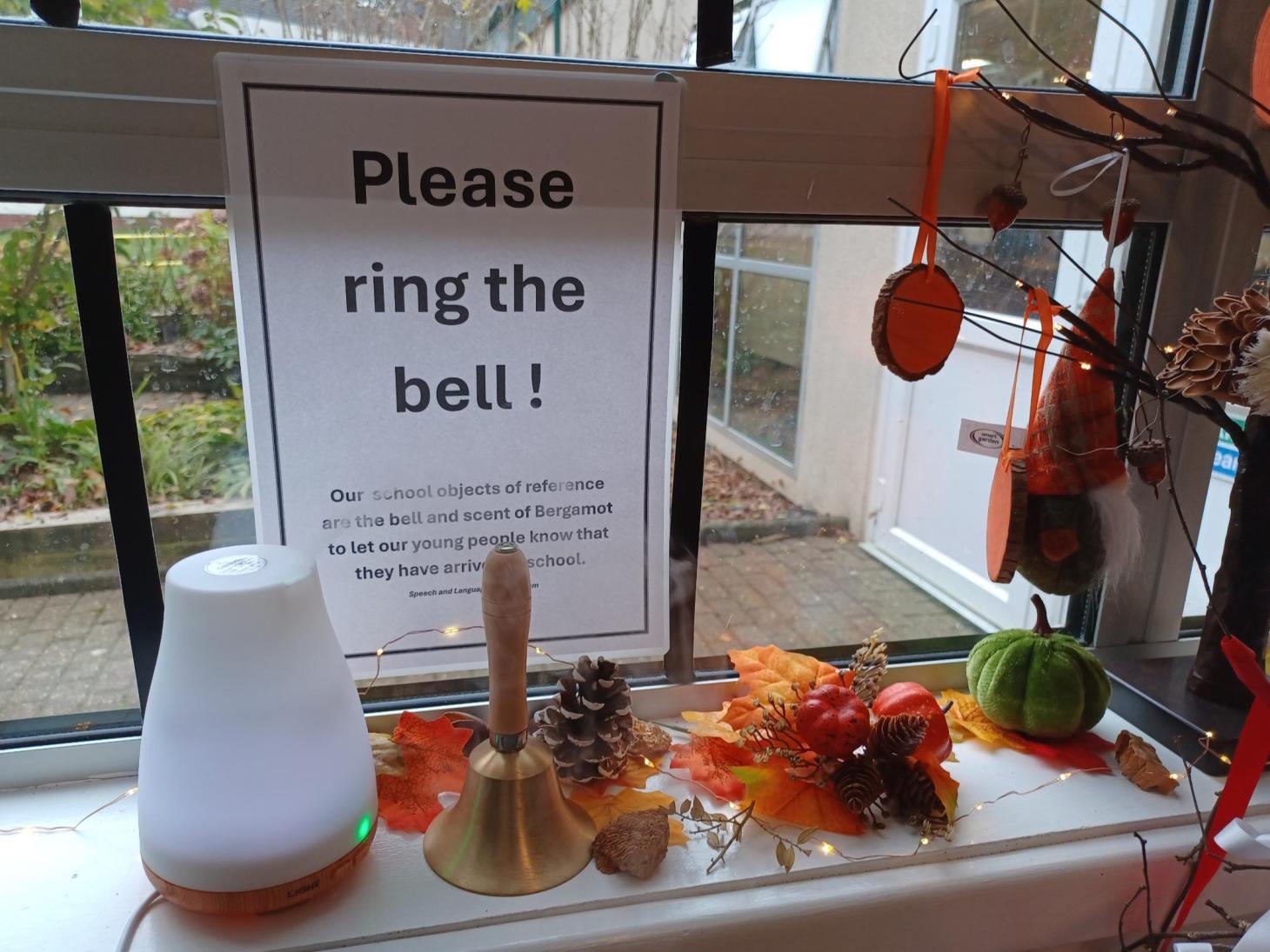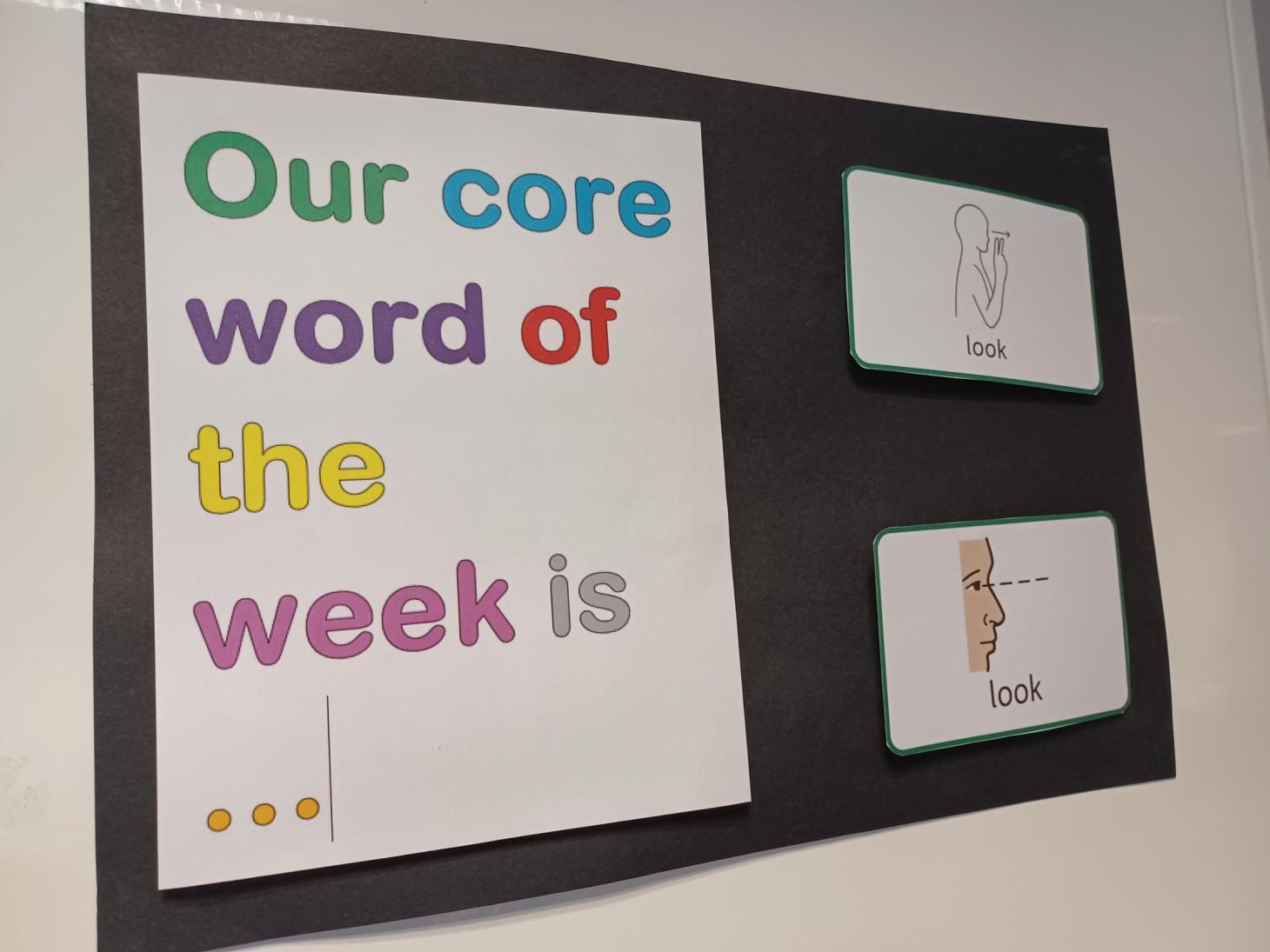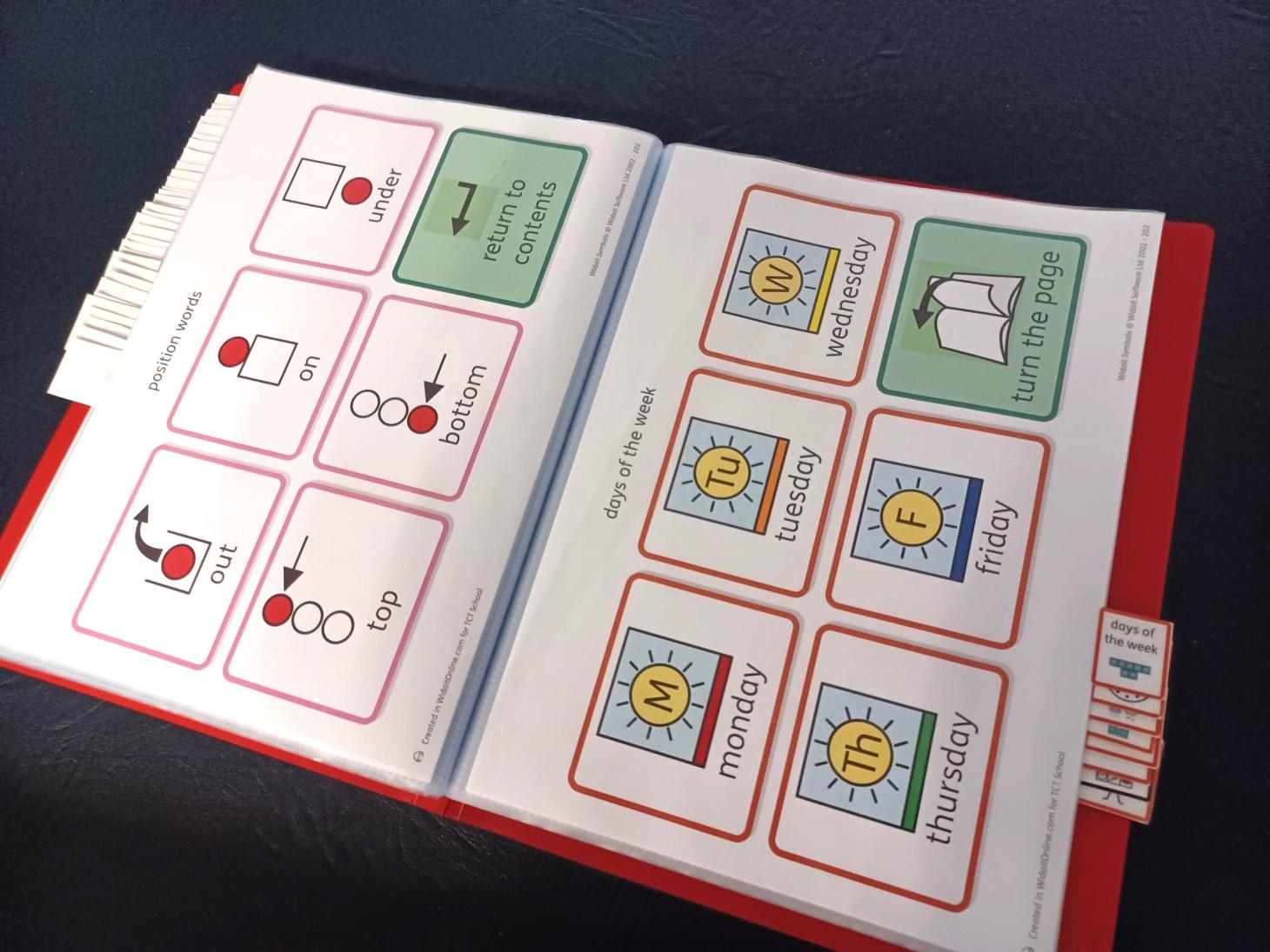
Connecting through communication
This October, we mark AAC Awareness Month by sharing the different communication techniques used by the children we support.
AAC Awareness month seeks to raise awareness of augmentative and alternative communication (AAC). AAC is all of the ways that someone communicates besides talking. Children with a brain injury or neurodisability, may use AAC if they have challenges with speech or language skills.
Augmentative means to add to someone’s speech.
Alternative means to be used instead of speech.
AAC at The Children’s Trust
Some of children we support at The Children’s Trust use AAC throughout their life, others may use AAC only for a short time during their rehabilitation journey.
Abigail Sayell, Specialist Speech and Language Therapist, shares some of the communication techniques that are used within The Children’s Trust School…
Project core
Students at The Children’s Trust School we use a core vocabulary, which is a selection of 36 words that are used frequently in lots of different contexts. We recently implemented ‘Project core’, which teaches the students with neurodisability and complex communication needs, how to use a core vocabulary through AAC systems.
Each child has a booklet of ‘core words’ which is always available to them. Each classroom has a ‘core word’ board to display the symbol and Makaton sign of the week. The children have also been taking part in fun activities at school and in our residential houses, to support implementation of the ‘core word of the week’.

Communication Book
Every child in The Children’s Trust School has a communication book. This book has lots of vocabulary for children to access, as well as symbols to aid understanding of the vocabulary.
Communication books can support with children’s expression, through access methods such as eye-pointing or partner assisted auditory scanning (when words are read out and the child indicates when they have heard the word they want).
Typically, children learn language by listening to adults around them use it and copy it. It’s really important to use the books as much as possible across lots of different contexts so that the children can listen, copy and learn how to use the communication books themselves. Different topics the children might like to talk about include school activities, games, sports, emotions and friends and family.

Objects of reference
Objects of Reference are objects used to represent a person, activity or event. For example, a small trowel might represent gardening, or the feeling of a swimming costume might inform a child they are going to be swimming. Objects of Reference are used to help a person understand what is happening in their environment; over time, the person learns that the object stands for that person, activity or event.
At The Children’s Trust School, talking tiles and bags of scented cotton wool are located by the doorway to each residential house, and there is a diffuser and bell by the entrance to the school. Each building has its own scent acting as an object of reference so children can orientate themselves to where they are.
The children enjoy exploring the different scents in the residential houses and in the school, especially ringing the school bell!

